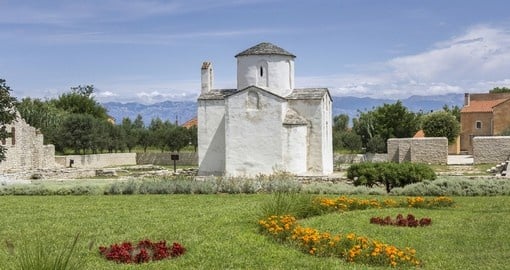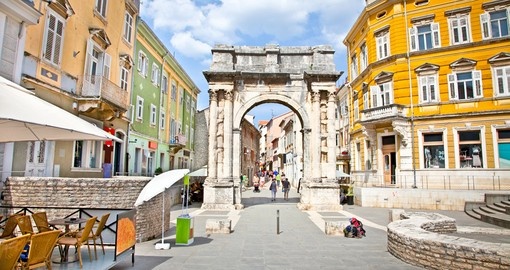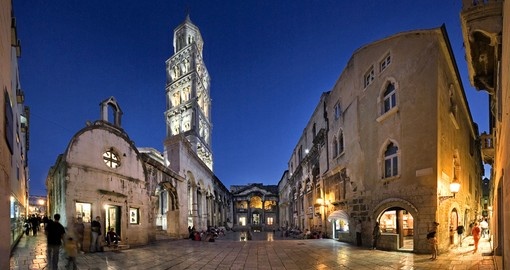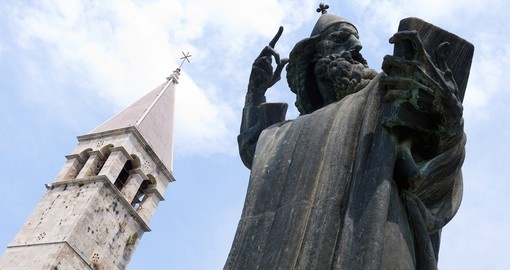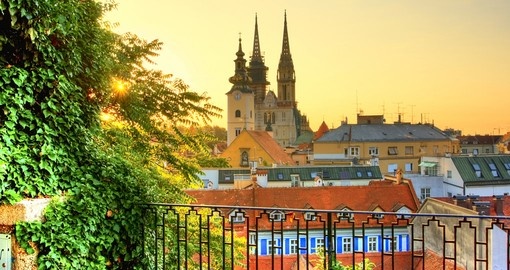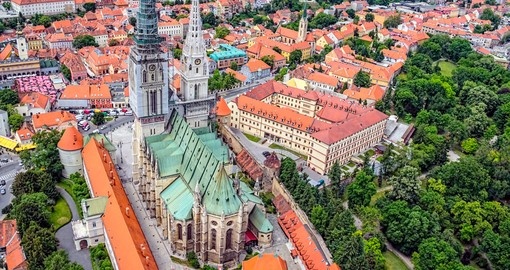Croatia History
Excavations done in Croatia suggest that it has been occupied since the Paleolithic Age. Eastern Slavonia, one of the four historical regions of Croatia, was the base for a culture that would eventually spread to Slovakia, Slovenia, Austria, Germany, Hungary and the Czech Republic.
The Illyrians, an Indo-European tribe, migrated to present-day Croatia around 1000 BC. By the 6th century BC, they had established trading posts along the coasts, however, in the 4th century BC, the Celts arrived, pushing the Illyrians further south. The Romans came in 11 BC and would go on to rule the area until the fifth century.
Under Roman rule, Croatia was divided into two areas, the coastal area called Dalmatia, and the northern area called Pannonia. They made Solin their administrative centre and set about creating important roads that helped connect Croatia to its neighbours. By the third century, the Roman Empire was beginning to crumble, unable to maintain such a vast and spread-out territory. The last ruler of a united Roman empire was Theodosius. Upon his death, the territory was split into east and west, with Croatia falling into the Western Roman Empire.
In 800 AD, Charlemagne’s Frankish army took control of Dalmatia, and in doing so, converted much of the population to Christianity. When Charlemagne died in 814, Dalmatia remained under the Byzantine Empire, while Pannonia stayed under Frankish rule. In some places, the spread of Christianity divided countries, however, in Croatia, it actually helped to unite the nation, providing a necessary national identity that had been missing from Dalmatia and Pannonia. In 925, Tomislav was named king and with his coronation, Croatia the Kingdom came into being. Tomislav’s ancestors would rule until the 11th century when Hungary stepped in.
During the 1400s, the Ottoman Empire wanted to overtake the Balkans. As a result of this endeavour, Croatia became stuck in battles between the Turks and the Hungarians. Despite these battles, Croatia resisted and joined the Hapsburg monarchy. They eventually became part of the Austro-Hungarian Empire.
Late in the 18th century, Napoleon and Austria made a deal that saw Dalmatia come under Austrian rule. This arrangement only lasted until 1805 when France engaged in a battle with Austria and Prussian. Eventually winning the fight, France took control of the Dalmatia coast. The French heavily developed Dalmatia building new schools, roads and hospitals. Despite these advances, the French were unpopular because of the taxes imposed to pay for the new infrastructure. When Napoleon’s empire fell, Dalmatia was once again returned to Austria.
In 1867, the Austro-Hungarian Dual Monarchy was established. For Croatia, this meant that Croatia and Slavonia came under the Hungarian side, while Dalmatia was still under Austria. Following the end of the First World War, Croatia aligned itself with the Serbs, forming the Kingdom of Serbs, Croats and Slovenes. Unrest unfolded quickly between the different groups that would continue into the World War. Partisans led by Josip Broz, or Tito, came to control much of Croatia by 1943. Croatia became one of six republics along with Macedonia, Serbia, Montenegro, Bosnia and Herzegovina, and Slovenia. Tito prevented all opposition in the republics and created a one-party state.
The Croatian Spring of 1971 saw a call for greater economic autonomy and constitutional reform. The crackdown was intense, which only served to set the stage for a deeper felt nationalism and the eventual war that followed Tito’s death. In 1991, Croatia declared itself independent from Yugoslavia, and Serbians living in the territory of Krajina proclaimed independence from Croatia. This led to a great deal of upheaval and war was on the horizon.
The Bosnian War from 1992-95 was a territorial battle between Serbs, Croats and Bosnians. In an incredibly bloody conflict, approximately 100,000 people died, many of them civilians. Slobodan Milošević, the president of Serbia, set out to rid the former Yugoslavia of Croats, Bosnians and Muslims. NATO intervened in 1995 and the Dayton Peace Accords were signed in December of that year, effectively ending the war.
Croatia’s traditional borders were restored and they were relatively successful in making the transition to an independent nation. In 1999, Stjepan Mesić became president and in 2009, the country had its first female prime minister. Today, many consider it to be one of Europe’s top seaside destinations. It hosts seven UNESCO World Heritage Sites, as well as world-class museums and festivals and is continuing to grow as a unique and interesting tourist destination.
Croatia Travel Information
At Goway we believe that a well-informed traveller is a safer traveller. With this in mind, we have compiled an easy-to-navigate travel information section dedicated to Croatia.
Learn about the history and culture of Croatia, the must-try food and drink, and what to pack in your suitcase. Read about Croatia's nature and wildlife, weather and geography, along with 'Country Quickfacts' compiled by our travel experts. Our globetrotting tips, as well as our visa and health information, will help ensure you're properly prepared for a safe and enjoyable trip. The only way you could possibly learn more is by embarking on your journey and discovering Croatia for yourself. Start exploring… book one of our Croatia tours today!
Get a Trip Quote Order a Brochure






